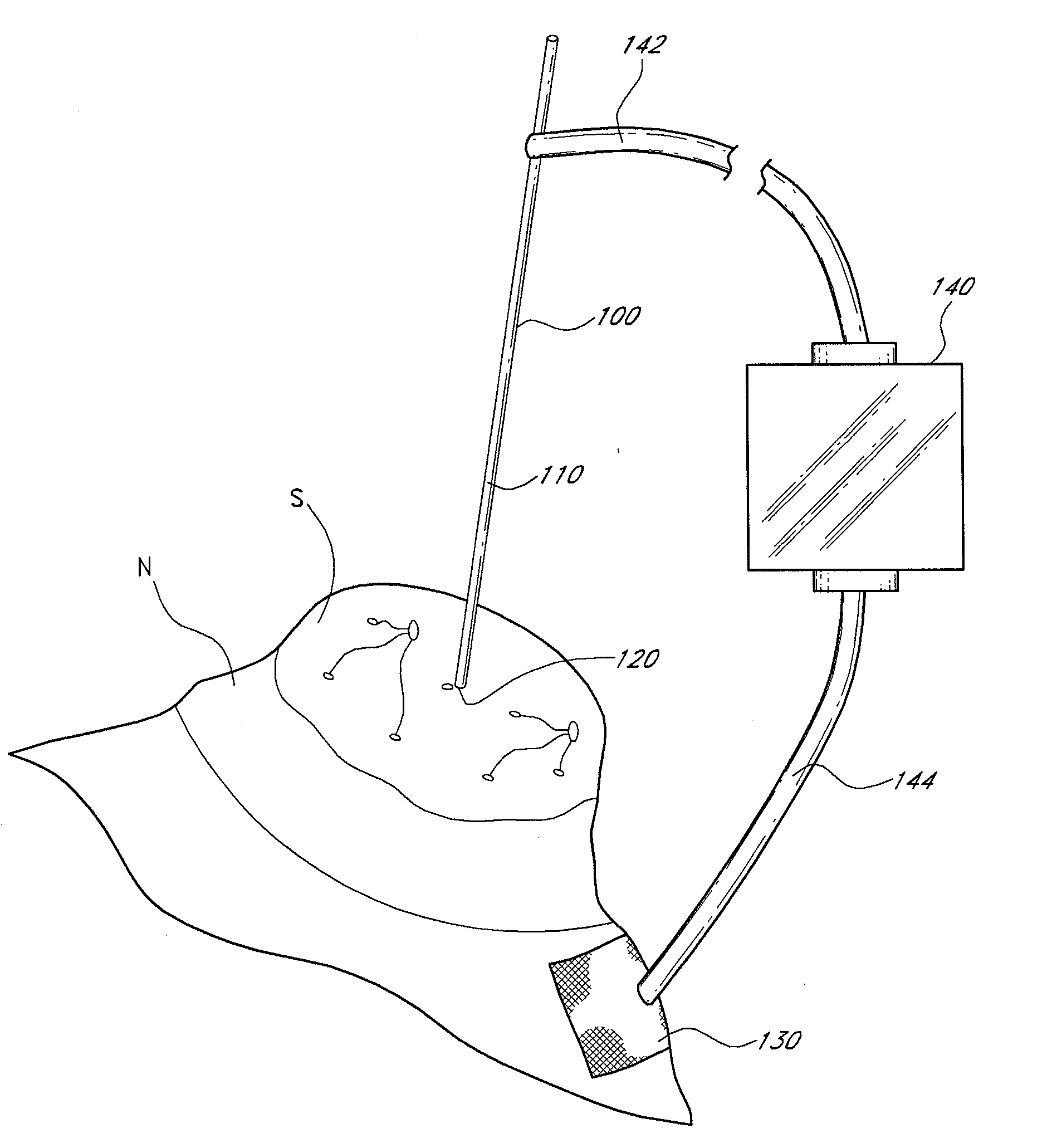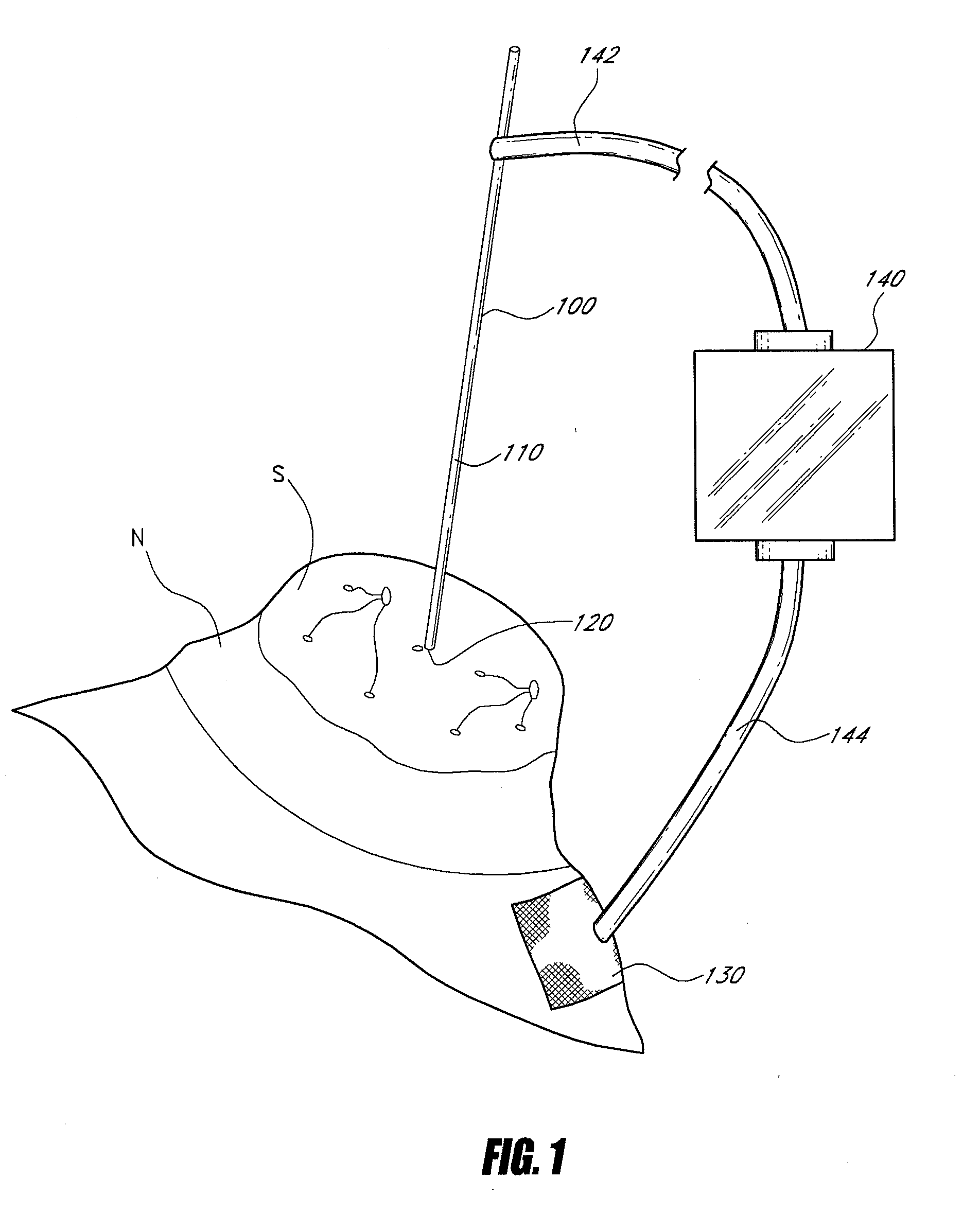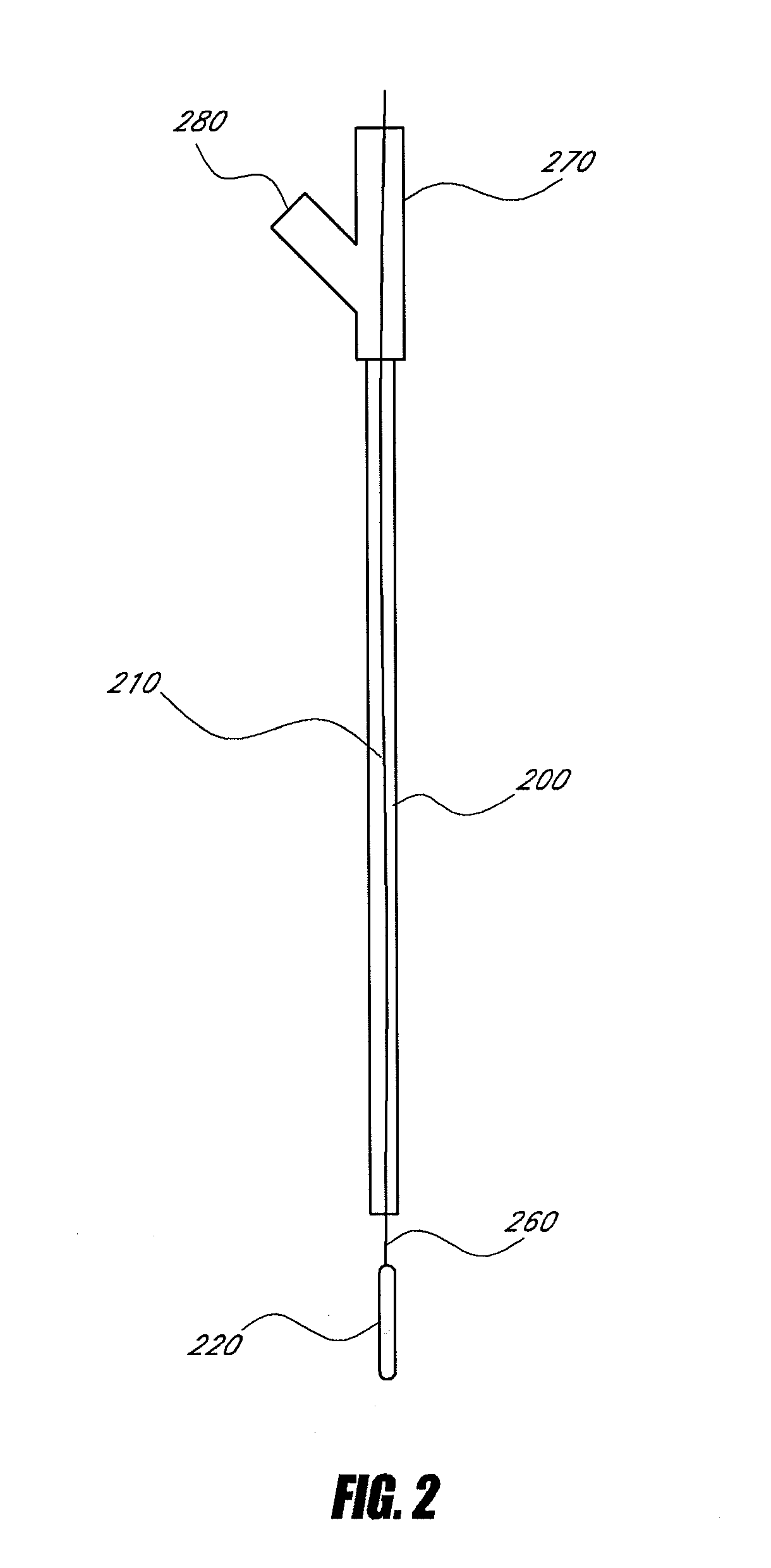Device and method for accessing and treating ducts of mammary glands
a technology of mammary glands and access points, applied in the field of accessing and treating ducts of mammary glands, can solve the problems of at least some epithelial and/or non-epithelial cells to toxic agents, and achieve the effect of enhancing breast aesthetics
- Summary
- Abstract
- Description
- Claims
- Application Information
AI Technical Summary
Benefits of technology
Problems solved by technology
Method used
Image
Examples
embodiment
Detailed Embodiment
[0312]FIG. 16 is a block diagram of the analyzer 140 according to an embodiment of the invention. It will be appreciated by the skilled practitioner that the analyzer 140 can be modified in a variety of ways. For example, in another embodiment, various functional blocks can be combined, can be separated, and the like.
[0313]The analyzer 140 can include a circuit analyzer 1600, a controller 1670, a signaling audio transducer 1680, and a lookup table 1690. The circuit analyzer 1600 can include a programmable direct digital synthesizer (DDS) and digital-to-analog converter (DAC) 1610, a relatively low-output impedance amplifier 1620, a current sense amplifier 1630, an analog-to-digital converter (ADC) 1640, and a Fourier Transform processor 1650, e.g., discrete Fourier Transform processor. A coherent sampling timing signal 1660 can be provided by a clock or oscillator. In one embodiment, the circuit analyzer 1600 is embodied in a single network analyzer integrated cir...
example 1
Electrical Map of the Nipple Surface
[0333]A human nipple is dekeratinized and coated with a liquid crystal gel capable of registering a characteristic electrical signal, and a screen (a nylon wire matrix having tiny squares formed of the wire cross-hatch grid). The screen having a nylon wire grid is the size of the area of the nipple and is placed on the nipple. A reference electrode is placed at the base of the breast, and a test electrode is placed on the surface of the nipple. A potential and / or current is generated through the breast, and an electrical map is created by the variation of characteristic electrical signal values on the surface of the nipple. The readings of characteristic electrical signal measured in ohms by the machine capable of generating an electrical potential or current in an electrical circuit connected to the reference and test electrodes indicate likely locations of a ductal orifice with reference to a reference value (e.g., a value below which or above w...
example 2
Characteristic Electrical Signal Measurements in Rabbit and Human Breasts
[0334]Electrical measurements of impedance and / or capacitance were made using platinum or silver-silver chloride electrodes having a tip of between 1 μm and 1 mm. The electrode was manually placed at different locations on the surface of a nipple on a dead rabbit pelt (n=100 locations), the surface of a live rabbit nipple (n=90 locations), a masticated detached human breast (n=130 locations), and a human breast (n=70 locations). Measurements made on the surface of the human nipple at frequencies between 10 Hz and 100 kHz showed differences between the milk duct and the surrounding non-duct area of the nipple by detection of impedance measurements (as a characteristic electrical signal) of between 2 kilohms and 18 megohms and higher with some characteristic electrical signals too high to register. Differences in capacitance varied between the milk duct and the surrounding non-duct area of the nipple with values ...
PUM
 Login to View More
Login to View More Abstract
Description
Claims
Application Information
 Login to View More
Login to View More - R&D
- Intellectual Property
- Life Sciences
- Materials
- Tech Scout
- Unparalleled Data Quality
- Higher Quality Content
- 60% Fewer Hallucinations
Browse by: Latest US Patents, China's latest patents, Technical Efficacy Thesaurus, Application Domain, Technology Topic, Popular Technical Reports.
© 2025 PatSnap. All rights reserved.Legal|Privacy policy|Modern Slavery Act Transparency Statement|Sitemap|About US| Contact US: help@patsnap.com



